Application of Building Performance Simulation to Design Energy-Efficient Homes: Case Study from Saudi Arabia
Abstract
1. Introduction
- Assess the current industry practices and knowledge/awareness of BPS;
- Identify the key barriers to implementing a BPS-based design process in Saudi Arabia;
- Measure the potential of minimizing energy consumption in the Saudi homes and propose guidelines to develop energy-efficient homes.
2. Challenges in Designing and Constructing Energy-Efficient Buildings in the Saudi Construction Industry
- Harsh desert climate of Saudi Arabia;
- Outdated construction sector;
- Subsidized electricity tariffs;
- High growth rate;
- Lack of policies/codes/incentives to develop energy-efficient buildings.
3. Methodology
3.1. Survey Study
- Which of the following influences your decision-making process?
- Are you aware of BPS?
- Are you currently evaluating the energy performance of your projects?
- Do you have knowledge of any Saudi building codes requiring you to perform BPS?
- Which of the following BPS tools do you have knowledge of?
- Does your firm offer BPS as a service?
- Are you aware of any firm specializing in BPS in the region?
- How much should the additional BPS fee be, roughly, compared to the regularly paid fee for service?
- How often is BPS requested by clients?
- Which of the following do you consider to be major non-technical barriers in application of BPS?
- Do you think BPS could significantly reduce energy consumption of houses if incorporated in the house design process and decision-making?
- At what design stages do you think BPS should be conducted?
- If BPS is conducted, do you think the results will have direct implications on your design?
- Are you willing to attend training and courses to develop BPS skills?
- Do you think your organization will support you if you want to develop BPS skills?
3.2. Case Study Description
3.3. Case Study Simulation
4. Results and Discussion
4.1. Survey Results
4.2. Case Study Analysis
4.3. Discussion
- Industry professionals lack of awareness about energy efficiency, in particular regarding the Saudi building energy codes (SBC 601);
- Lack of industry professionals’ technical knowledge about conducting BPS consequently resulting in a workforce which is inadequate to design energy-efficient homes;
- The extra costs associated with BPS;
- There is no client awareness about BPS and energy-efficient buildings, in general. Thus, clients never or rarely request BPS and are not willing to invest in energy-efficient buildings;
- Lack of awareness and enforcement from regulatory bodies.
- The window-to-wall ratio should be less than or equal to 10%.
- In addition to internal shading devices, the windows should be shaded by horizontal shading devices which are between 0.5 and 1 m in length.
- The finish color on the exterior walls should be light, preferably white, and no dark tones should be used on any part of the exterior walls regardless of the aesthetic appeal.
- The glazing type should be double glazing and a maximum U-value of 2 W/m2·K should be achieved.
- Envelope insulation is now mandated in Saudi Arabia; however, it should be made sure that proper type of insulation is used and a U-value in range of 0.50 to 0.75 W/m2·K is achieved in the design of the envelope section.
- The lighting type should be LED lights.
- The HVAC system used should be a split type with COP in the range of 3.0 to 3.5.
5. Conclusions
Author Contributions
Funding
Conflicts of Interest
References
- Abergel, T.; Dean, B.; Dulac, J. Towards a Zero-Emission, Efficient, and Resilient Buildings and Construction Sector: Global Status Report 2017; UN Environment and International Energy Agency: Paris, France, 2017. [Google Scholar]
- Andrea Thompson Major Greenhouse Gas Reductions Needed by 2050: IPCC|Climate Central. Available online: http://www.climatecentral.org/news/major-greenhouse-gas-reductions-needed-to-curtail-climate-change-ipcc-17300 (accessed on 18 November 2018).
- Nejat, P.; Jomehzadeh, F.; Taheri, M.M.; Gohari, M.; Abd Majid, M.Z. A global review of energy consumption, CO2 emissions and policy in the residential sector (with an overview of the top ten CO2 emitting countries). Renew. Sustain. Energy Rev. 2015, 43, 843–862. [Google Scholar] [CrossRef]
- IEA. Electric Power Consumption (kWh Per Capita)|Data. Available online: https://data.worldbank.org/indicator/EG.USE.ELEC.KH.PC (accessed on 18 November 2018).
- Alyousef, Y.; Abu-Ebid, M. Energy efficiency initiatives for Saudi Arabia on supply and demand sides. INTECH 2012, 3, 297–308. [Google Scholar]
- KAPSARC. Data Portal—Electricity Consumption by Sectors. Available online: https://datasource.kapsarc.org/explore/dataset/electricity-consumption-by-sectors/ (accessed on 5 June 2019).
- Sidawi, B. Hindrances to the financing of affordable housing In Kingdom of Saudi Arabia. Emirates J. Eng. Res. 2009, 14, 73–82. [Google Scholar]
- Magent, C.S.; Korkmaz, S.; Klotz, L.E.; Riley, D.R. A design process evaluation method for sustainable buildings. Archit. Eng. Des. Manag. 2009, 5, 62–74. [Google Scholar] [CrossRef]
- Mourshed, M.M.; Kelliher, D.; Keane, M. Integrating Building Energy Simulation in the design process. IBPSA News 2003, 13, 21–26. [Google Scholar]
- Clarke, J. Energy Simulation in Building Design, 2nd ed.; Routledge: Abingdon, UK, 2007. [Google Scholar]
- Attia, S.; De Herde, A.; Gratia, E.; Hensen, J.L.M. Achieving informed decision-making for net zero energy buildings design using building performance simulation tools. Build. Simul. 2013, 6, 3–21. [Google Scholar] [CrossRef]
- Korkmaz, S.; Messner, J.I.; Riley, D.R.; Magent, C. High-performance green building design process modeling and integrated use of visualization tools. J. Archit. Eng. 2010, 16, 37–45. [Google Scholar] [CrossRef]
- Zhai, Z.; McNeill, J.S. Roles of building simulation tools in sustainable building design. Build. Simul. 2014, 7, 107–109. [Google Scholar] [CrossRef]
- Xia, C.; Zhu, Y.; Lin, B. Building simulation as assistance in the conceptual design. Build. Simul. 2008, 1, 46–52. [Google Scholar] [CrossRef]
- Samuelson, H.; Lantz, A.; Reinhart, C. Non-technical barriers to energy model sharing and reuse. Build. Environ. 2012, 54, 71–76. [Google Scholar] [CrossRef]
- Tian, Z.; Zhang, X.; Jin, X.; Zhou, X.; Si, B.; Shi, X. Towards adoption of building energy simulation and optimization for passive building design: A survey and a review. Energy Build. 2018, 158, 1306–1316. [Google Scholar] [CrossRef]
- Han, T.; Huang, Q.; Zhang, A.; Zhang, Q. Simulation-based decision support tools in the early design stages of a green building—A review. Sustainability 2018, 10, 3696. [Google Scholar] [CrossRef]
- Shi, X.; Tian, Z.; Chen, W.; Si, B.; Jin, X. A review on building energy efficient design optimization rom the perspective of architects. Renew. Sustain. Energy Rev. 2016, 65, 872–884. [Google Scholar] [CrossRef]
- Delbin, S.; Gomes da Silva, V.; KKowaltowski, D.C.; Labaki, L.C. Implementing building energy simulation into the design process: A teaching experience in Brazil. In Proceedings of the 23rd Conference on Passive and Low Energy Architecture, Geneva, Switzerland, 6–8 September 2006; pp. 755–760. [Google Scholar]
- Sahin, A.Z.; Rehman, S. Economical feasibility of utilizing photovoltaics for water pumping in Saudi Arabia. Int. J. Photoenergy 2012, 2012, 542416. [Google Scholar] [CrossRef]
- Alaidroos, A.; Krarti, M. Evaluation of passive cooling systems for residential buildings in the Kingdom of Saudi Arabia. J. Sol. Energy Eng. 2016, 138, 031011. [Google Scholar] [CrossRef]
- Alrashed, F.; Asif, M. Challenges facing the application of zero-energy homes in Saudi Arabia: Construction industry and user perspective. In Proceedings of the ZEMCH 2012 International Conference, Glasgow, UK, 20–22 August 2012; pp. 391–398. [Google Scholar]
- Mujeebu, M.; Al Shamrani, O. Prospects of energy conservation and management in buildings—The Saudi Arabian scenario versus global trends. Renew. Sustain. Energy Rev. 2016, 58, 1647–1663. [Google Scholar] [CrossRef]
- Asif, M.; Dehwah, A.; Ashraf, F.; Khan, H.; Shaukat, M.; Hassan, M. Life cycle assessment of a three-bedroom house in Saudi Arabia. Environments 2017, 4, 52. [Google Scholar] [CrossRef]
- Alrashed, F.; Asif, M. Trends in residential energy consumption in Saudi Arabia with particular reference to the eastern province. J. Sustain. Dev. Energy, Water Environ. Syst. 2014, 2, 376–387. [Google Scholar] [CrossRef]
- Al Surf, M.; Mostaafa, L. Will the Saudi’s 2030 vision raise the public awareness of sustainable practices? Procedia Environ. Sci. 2017, 37, 514–527. [Google Scholar] [CrossRef]
- Asif, M. Growth and sustainability trends in the buildings sector in the GCC region with particular reference to the KSA and UAE. Renew. Sustain. Energy Rev. 2016, 55, 1267–1273. [Google Scholar] [CrossRef]
- KAPSARC. Data Portal—Building Permits Issued by Municipalities by Regions and Type of Permit 1987–2015. Available online: https://datasource.kapsarc.org/explore/dataset/building-permits-issued-by-municipalities-by-regions-and-type-of-permit-1987-201/ (accessed on 5 June 2019).
- Martinez, A. Facade Retrofit: Enhancing Energy Performance in Existing Buildings. Ph.D. Thesis, University of Southern California, Los Angeles, CA, USA, 2012. [Google Scholar]
- AlFaris, F.; Juaidi, A.; Manzano, F. Energy retrofit strategies for housing sector in the arid climate. Energy Build. 2016, 131, 158–171. [Google Scholar] [CrossRef]
- Alrashed, F.; Asif, M. An Exploratory of residents’ views towards applying renewable energy systems in Saudi Dwellings. Energy Procedia 2015, 75, 1341–1347. [Google Scholar] [CrossRef]
- Alrashed, F.; Asif, M. Analysis of critical climate related factors for the application of zero-energy homes in Saudi Arabia. Renew. Sustain. Energy Rev. 2015, 41, 1395–1403. [Google Scholar] [CrossRef]
- Alaidroos, A.; Krarti, M. Optimal design of residential building envelope systems in the Kingdom of Saudi Arabia. Energy Build. 2015, 86, 104–117. [Google Scholar] [CrossRef]
- Ahmad, A. Energy Simulation for a typical house built with different types of masonry building materials. Arab. J. Sci. Eng. 2004, 29, 113–126. [Google Scholar]
- Krarti, M.; Dubey, K.; Howarth, N. Evaluation of building energy efficiency investment options for the Kingdom of Saudi Arabia. Energy 2017, 134, 595–610. [Google Scholar] [CrossRef]
- Xie, J.; Pan, Y.; Jia, W.; Xu, L.; Huang, Z. Energy-consumption simulation of a distributed air-conditioning system integrated with occupant behavior. Appl. Energy 2019, 256, 113914. [Google Scholar] [CrossRef]
- Silveira, V.D.C.; Pinto, M.M.; Westphal, F.S. Influence of environmental factors favorable to the development and proliferation of mold in residential buildings in tropical climates. Build. Environ. 2019, 166, 106421. [Google Scholar] [CrossRef]
- Hu, M. Optimal Renovation Strategies for Education Buildings—A Novel BIM–BPM–BEM Framework. Sustainability 2018, 10, 3287. [Google Scholar] [CrossRef]
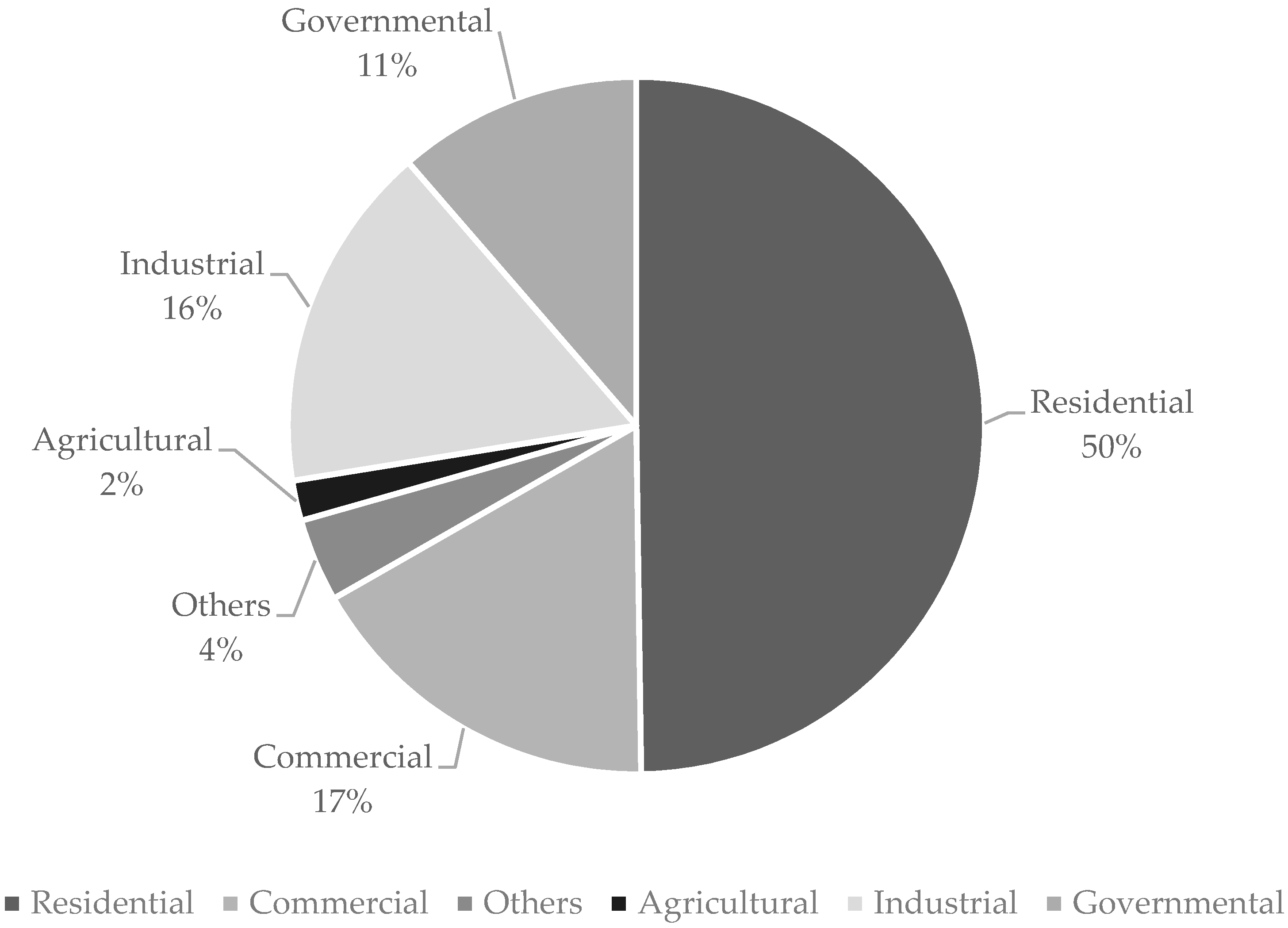
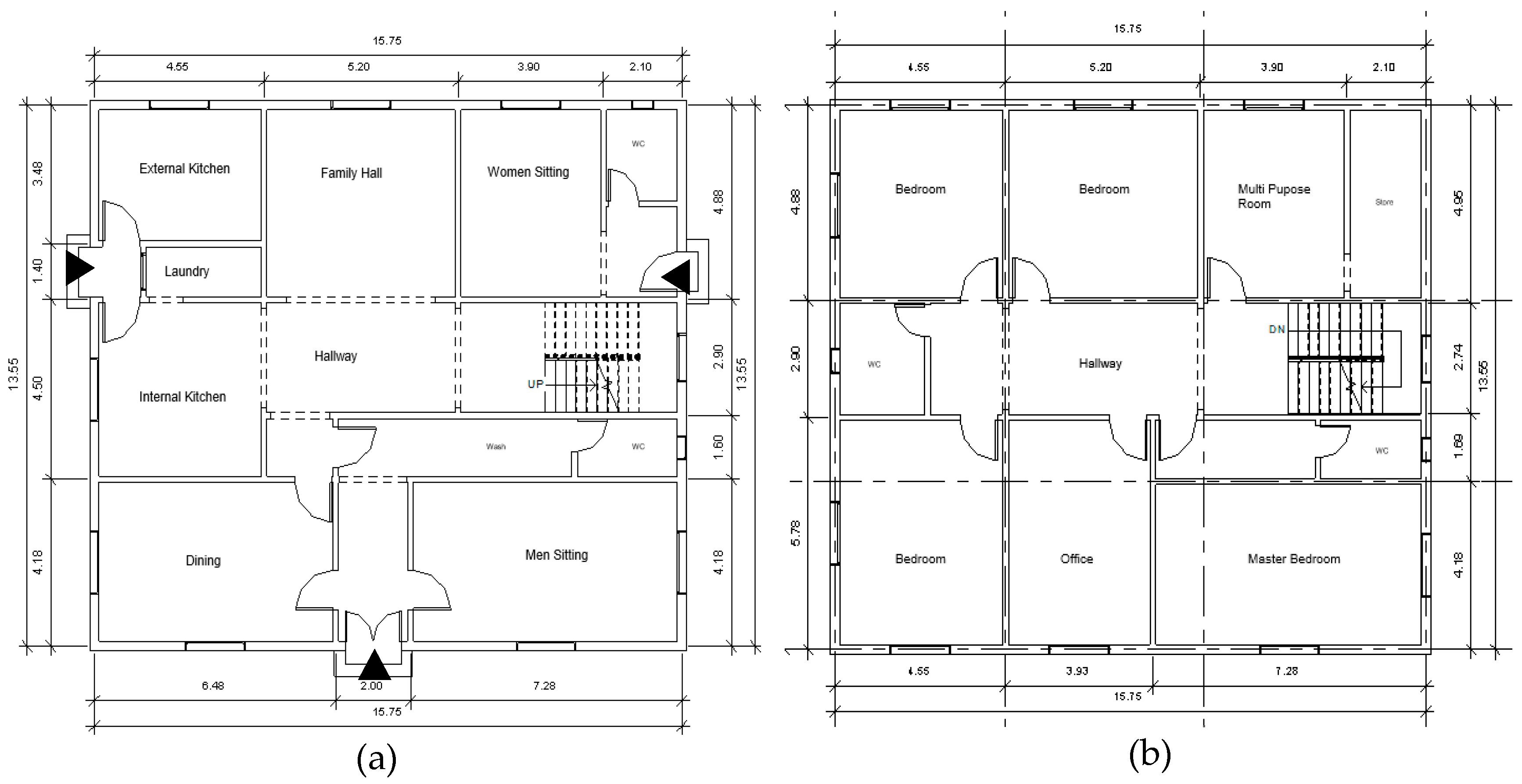
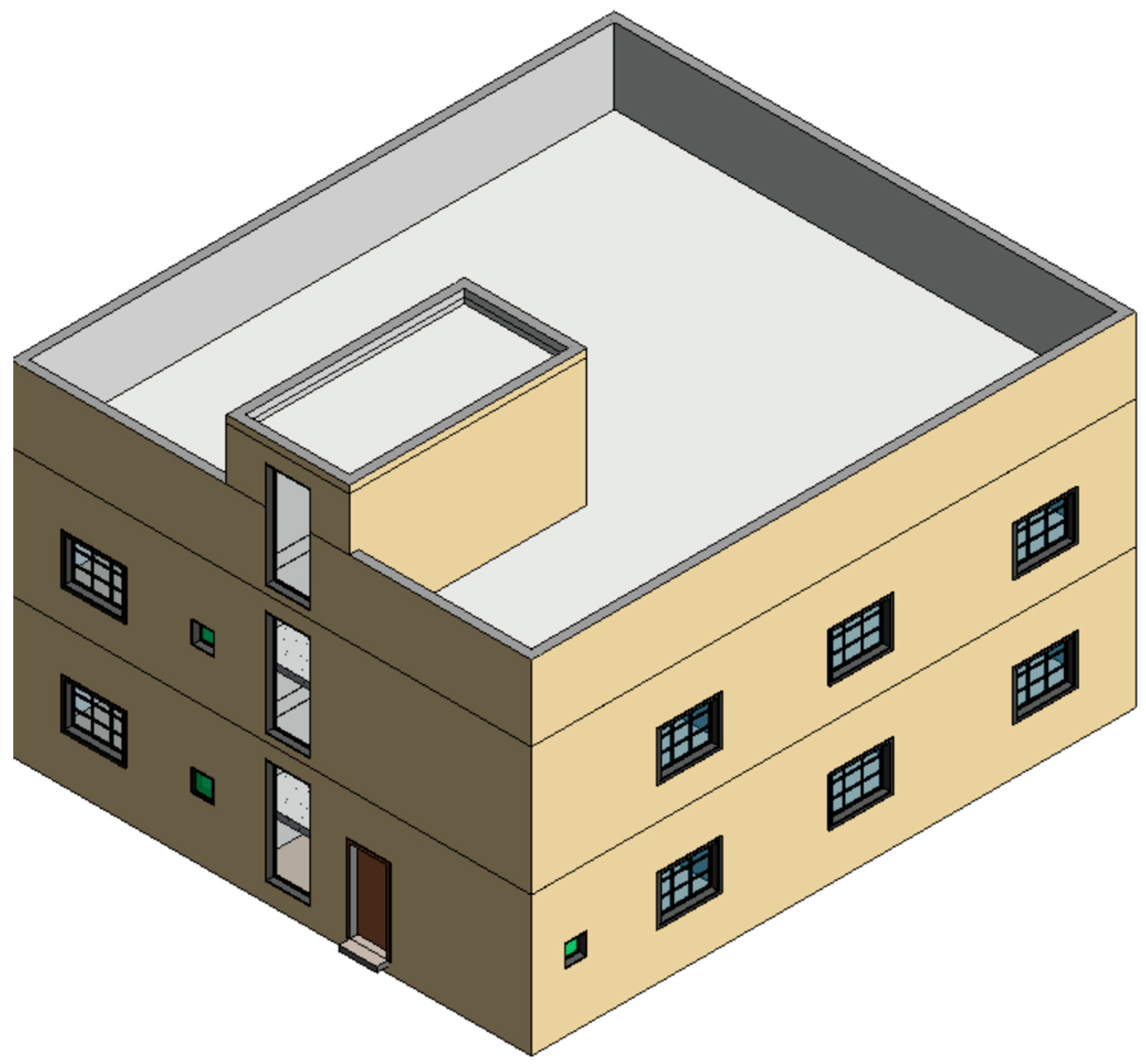
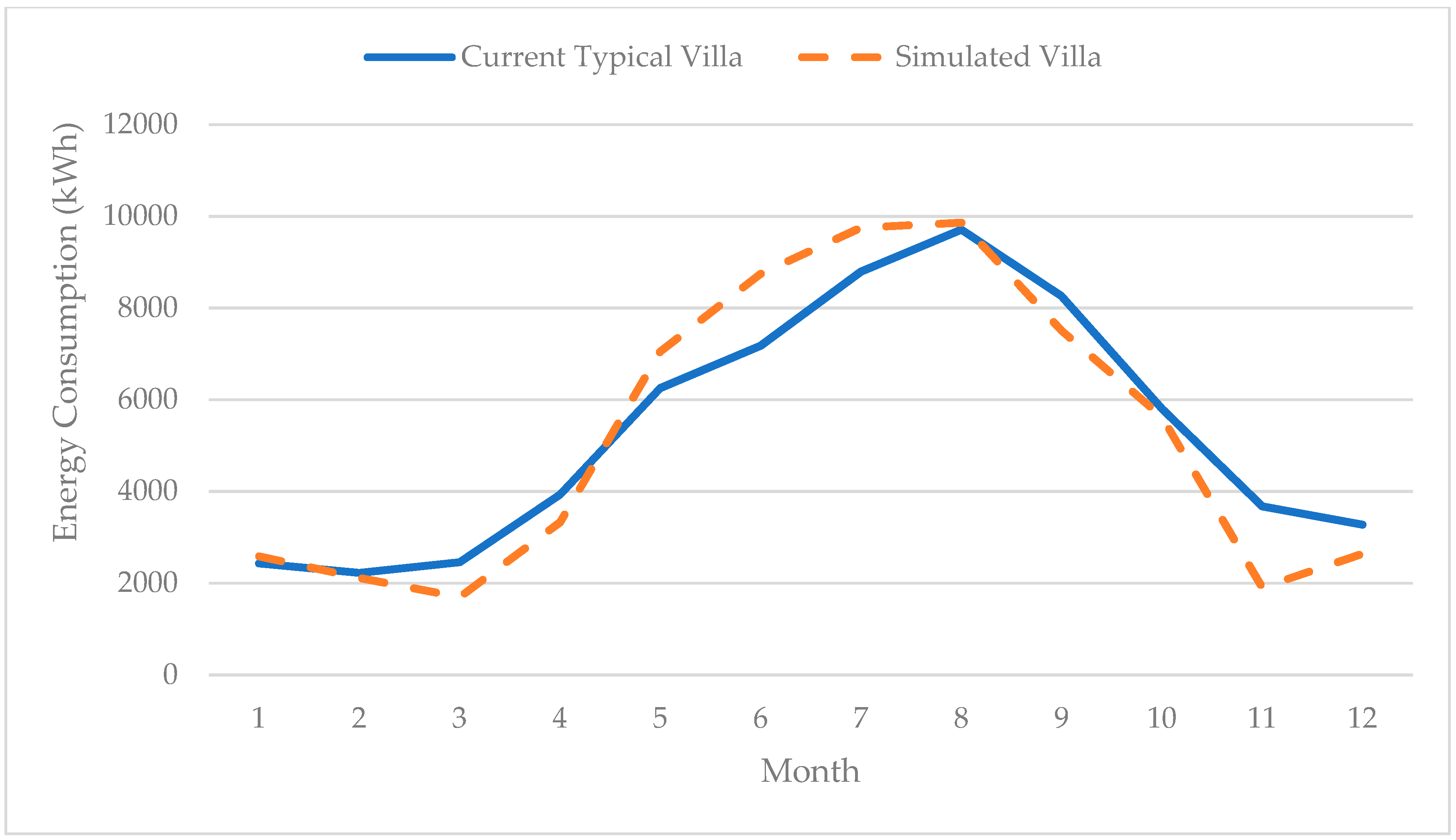

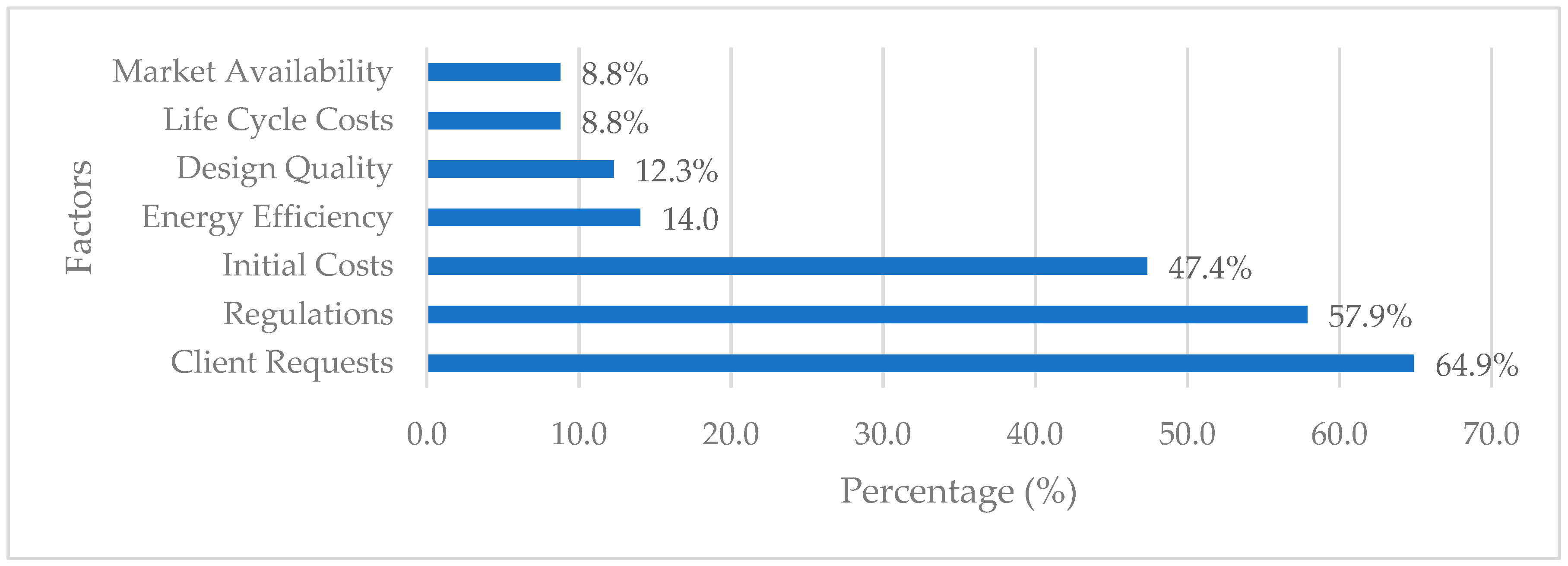
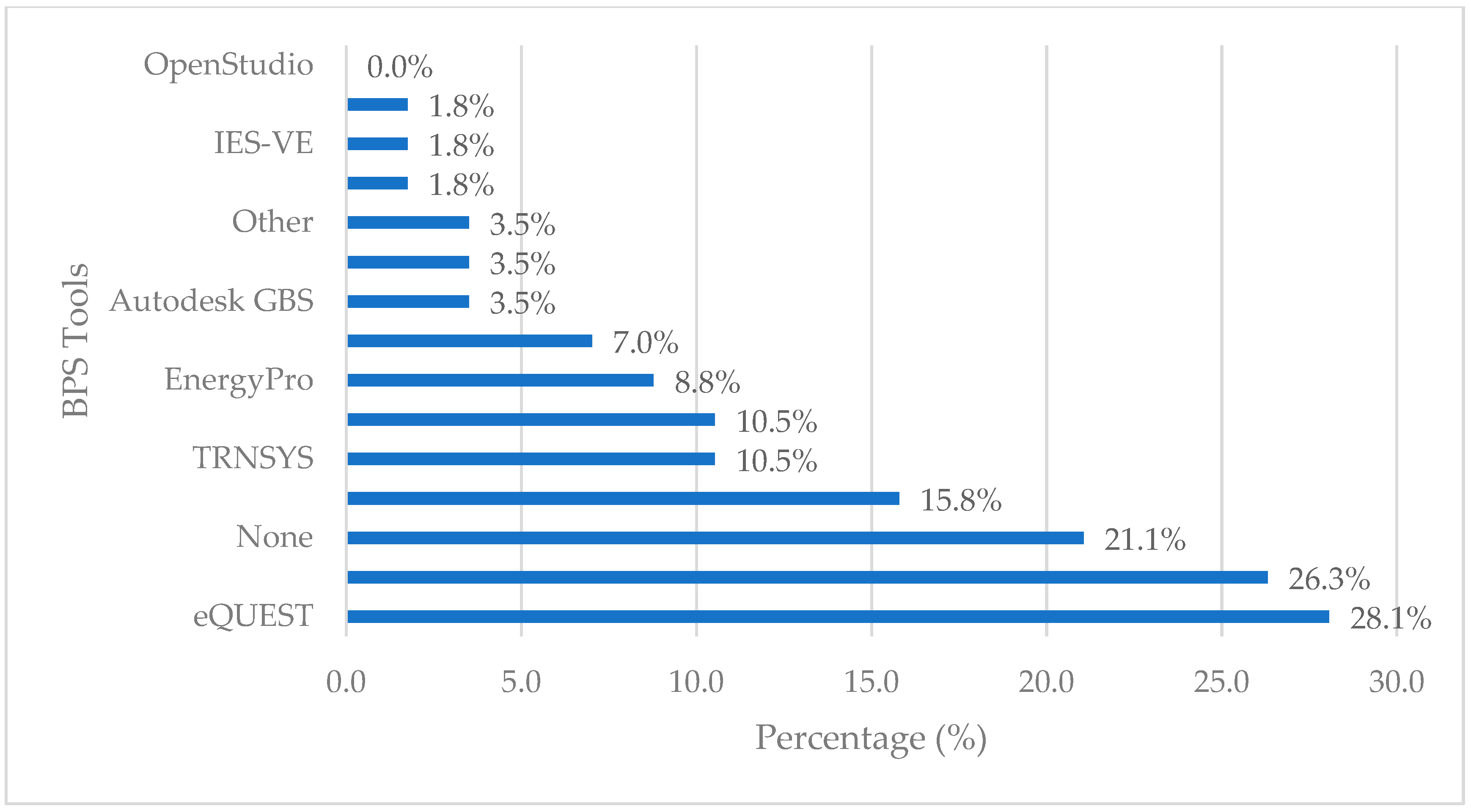
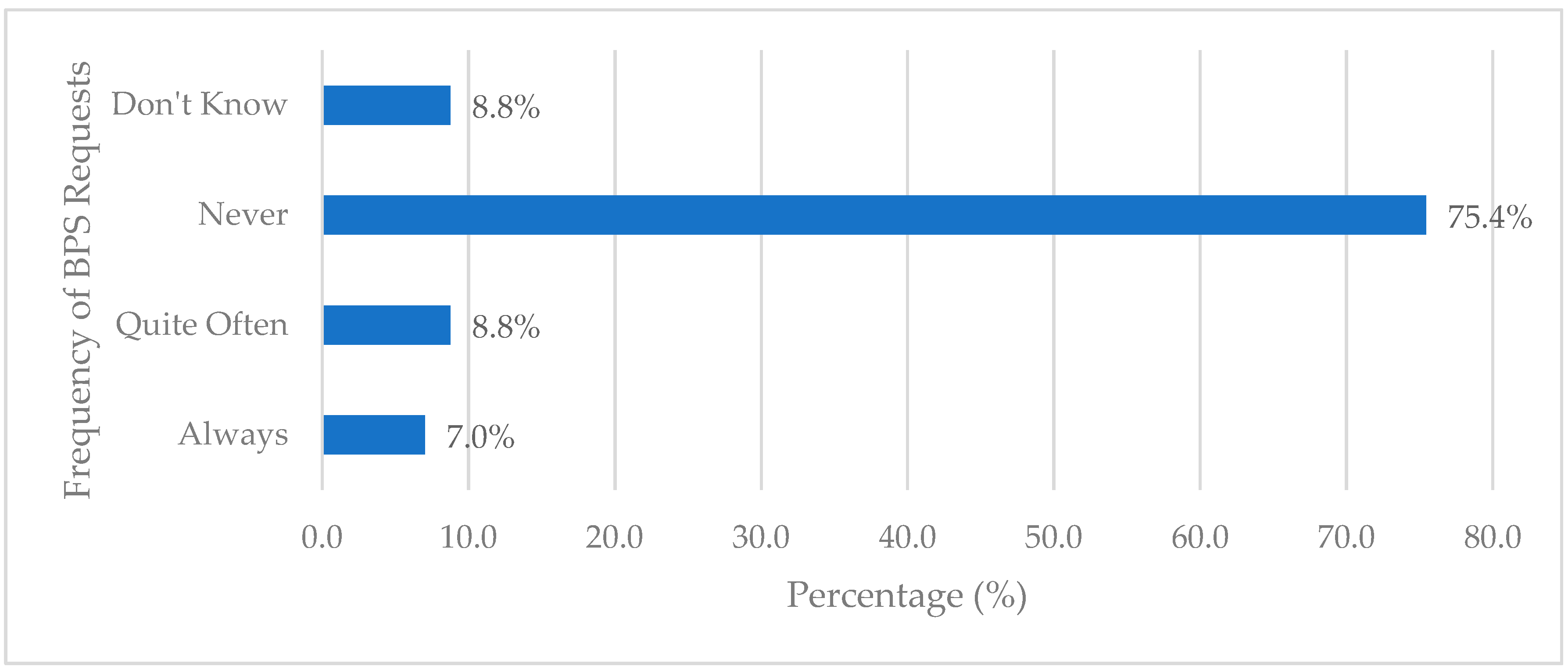
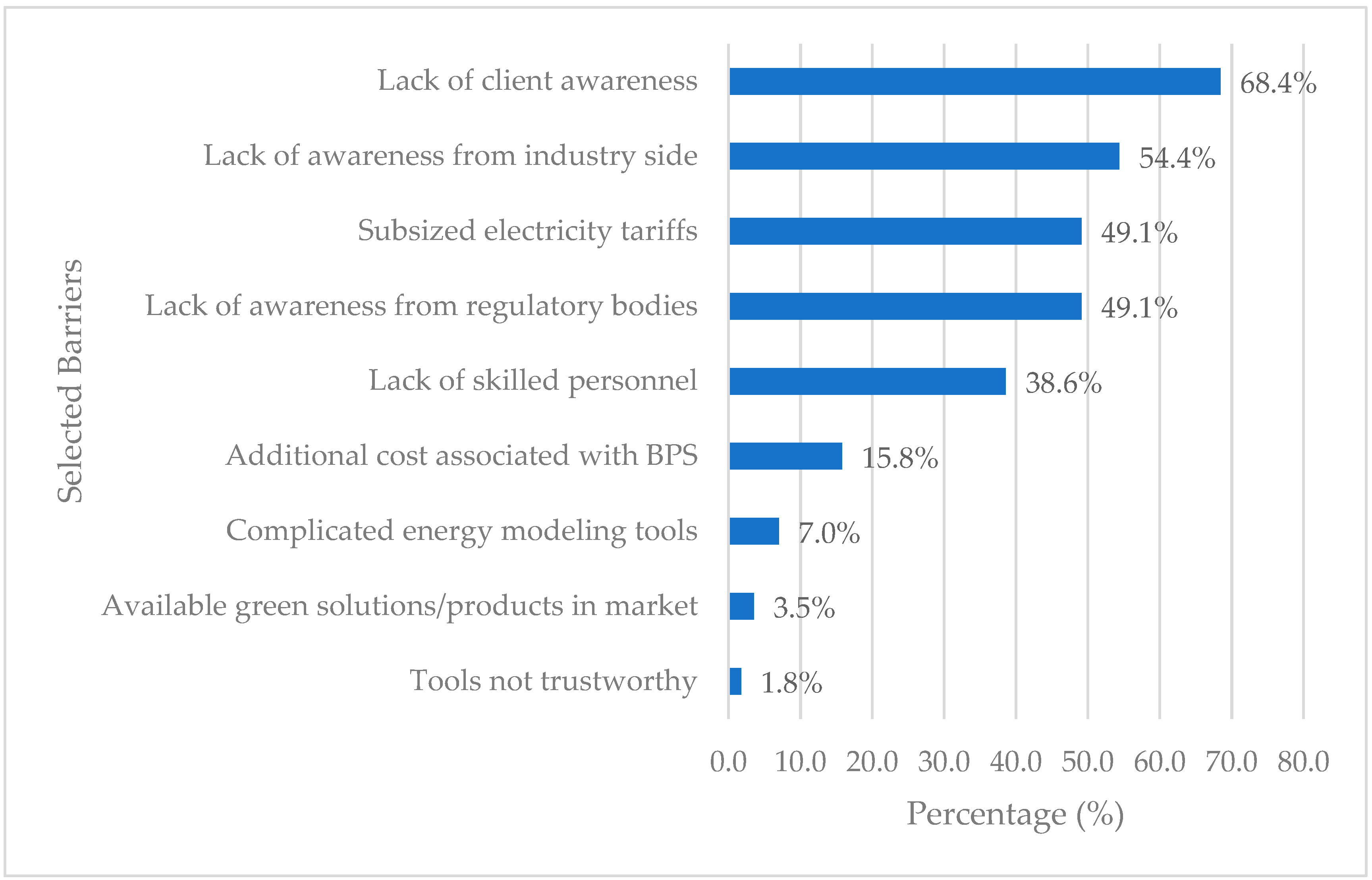

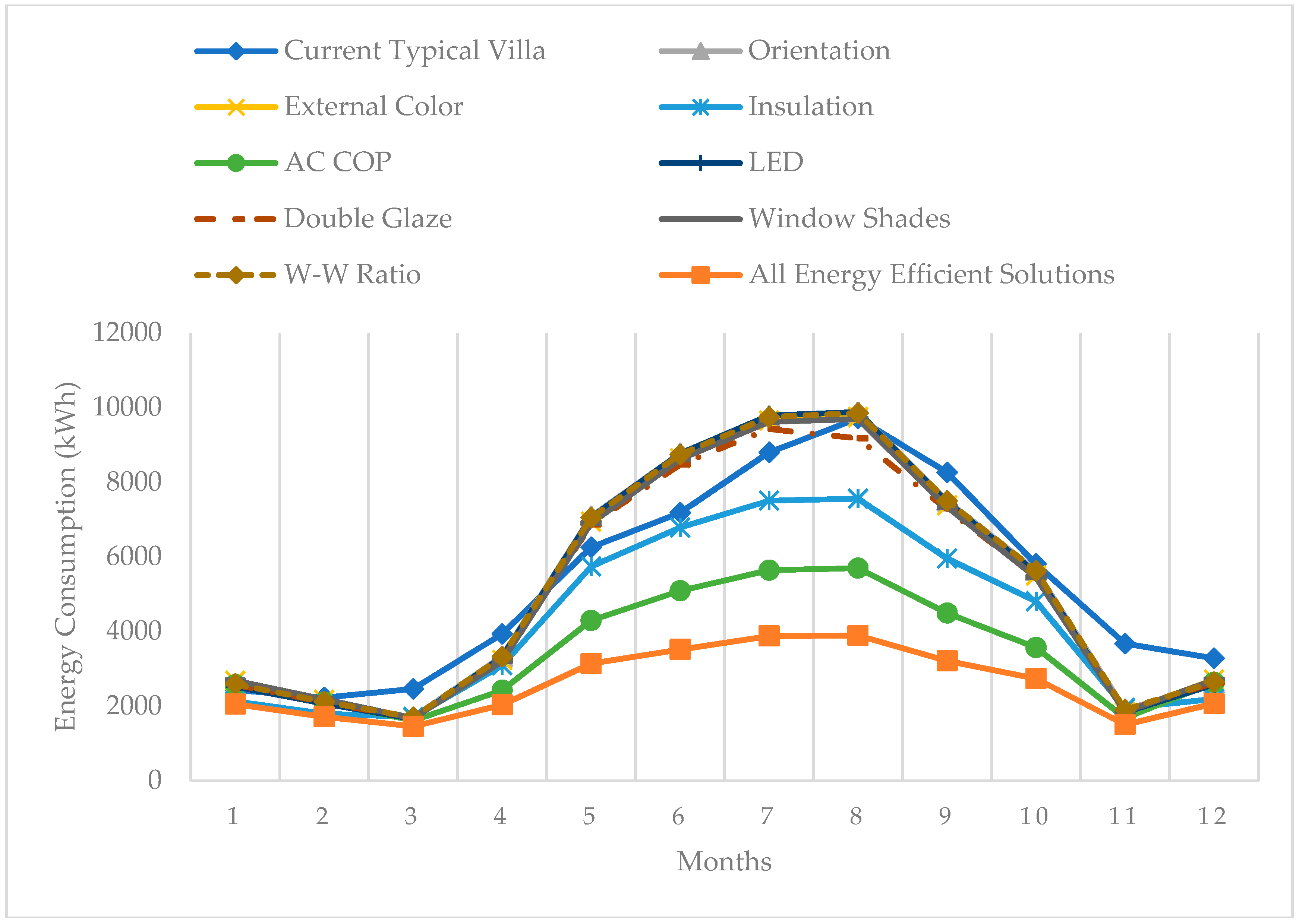
| Element | Description |
|---|---|
| Orientation | East–west |
| Floor Height | 3.4 m |
| Total Floors | 2 |
| Built Area | 430 m2 |
| Window–Wall (W–W) Ratio | 11% |
| Exterior Walls | 25 mm stucco, 75 mm concrete block, 50 mm air gap, 75 mm concrete block, 25 mm stucco U-value: 2.23 W/m2·K |
| Finish Color | Beige-yellow |
| Interior Walls | 25 mm stucco, 100 mm concrete block, 25 mm stucco |
| Roof | 25 mm terrazzo, 25 mm mortar, 4 mm bitumen layer, 150 mm cast concrete, 200 mm concrete block,15 mm gypsum board U-value: 1.934 W/m2·K |
| Glazing | Single clear U-value: 6.1 W/m2·K |
| Shading | None |
| HVAC | Split systems, coefficient of performance (COP) = 1.5 Minimum flow rate = 8 L/s/person |
| Kitchen Appliances | Maximum power consumption = 30 W/m2 |
| Living and Sleeping Zone Appliances | Maximum power consumption = 7 W/m2 |
| Lighting | Fluorescent (5 W/m2·100 lux) |
| Domestic Hot Water (DHW) | 190 L (90% delivery efficiency) |
| Energy Use Index (EUI) | 148.83 kWh/m2/Year |
| Element | Description |
|---|---|
| Orientation | North–south |
| Finish Color | White |
| Window-to-Wall Ratio | 7% |
| Shading | 1 m horizontal overhang |
| Glazing | Double low-e (argon-filled) U-value: 1.5 W/m2·K |
| Envelope | Added R-30 board insulation to walls and roof Wall U-value: 0.544 W/m2·K Roof U-value: 0.525 W/m2·K |
| HVAC System | Split systems, COP = 3 |
| Lighting System | LED (2.5 W/m2) |
| Element | EUI (kWh/m2/year) | Energy Consumption Reduced (%) | Total CO2 Emission of House (kg/year) |
|---|---|---|---|
| – | 148.8 | 0.0 | 43,840 |
| Orientation | 146.1 | 1.9 | 43,024 |
| W–W Ratio | 146.0 | 1.9 | 42,991 |
| Finish Color | 144.5 | 2.9 | 42,564 |
| Window Shading | 143.9 | 3.3 | 42,387 |
| Lighting | 145.3 | 2.4 | 42,800 |
| Glazing Type | 141.3 | 5.1 | 41,619 |
| Envelope Insulation | 119.0 | 20.0 | 35,065 |
| HVAC | 97.1 | 34.7 | 28,613 |
| All Solutions | 72.5 | 51.3 | 21,350 |
© 2019 by the authors. Licensee MDPI, Basel, Switzerland. This article is an open access article distributed under the terms and conditions of the Creative Commons Attribution (CC BY) license (http://creativecommons.org/licenses/by/4.0/).
Share and Cite
Ahmed, W.; Asif, M.; Alrashed, F. Application of Building Performance Simulation to Design Energy-Efficient Homes: Case Study from Saudi Arabia. Sustainability 2019, 11, 6048. https://doi.org/10.3390/su11216048
Ahmed W, Asif M, Alrashed F. Application of Building Performance Simulation to Design Energy-Efficient Homes: Case Study from Saudi Arabia. Sustainability. 2019; 11(21):6048. https://doi.org/10.3390/su11216048
Chicago/Turabian StyleAhmed, Wahhaj, Muhammad Asif, and Farajallah Alrashed. 2019. "Application of Building Performance Simulation to Design Energy-Efficient Homes: Case Study from Saudi Arabia" Sustainability 11, no. 21: 6048. https://doi.org/10.3390/su11216048
APA StyleAhmed, W., Asif, M., & Alrashed, F. (2019). Application of Building Performance Simulation to Design Energy-Efficient Homes: Case Study from Saudi Arabia. Sustainability, 11(21), 6048. https://doi.org/10.3390/su11216048




